
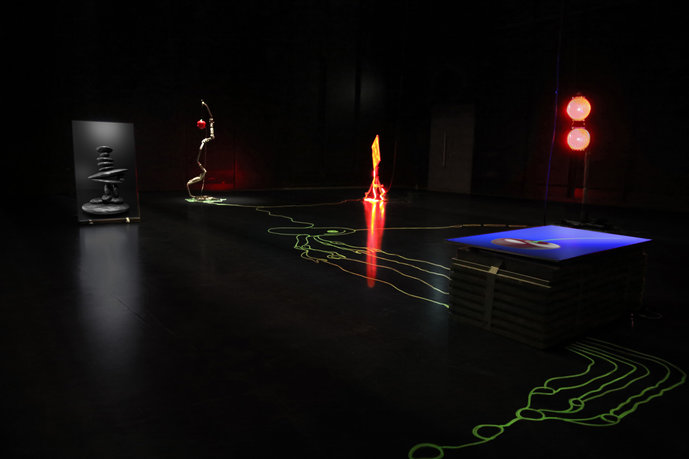
Installationsüberischt (© Mathias Lempart)

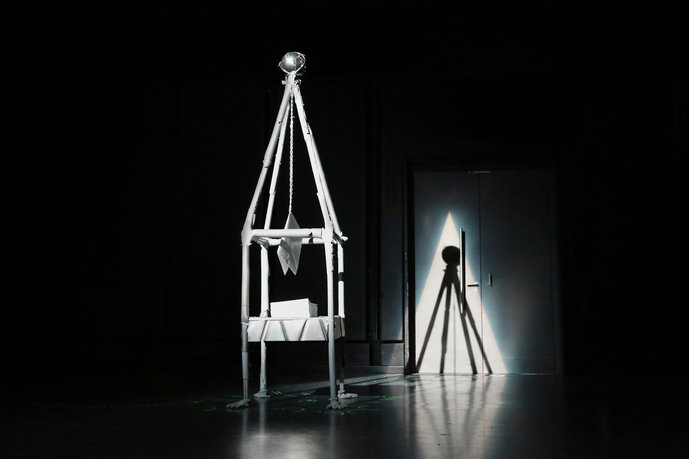
Hauke (© Mathias Lempart)

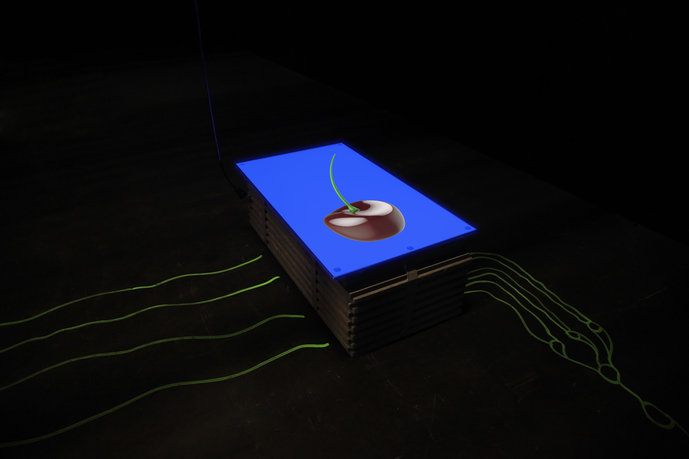
Sophia (© Mathias Lempart)

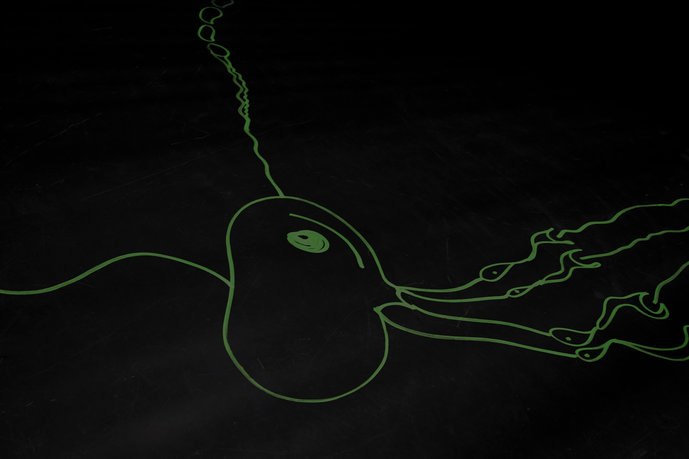
Detail Boden (© Mathias Lempart)

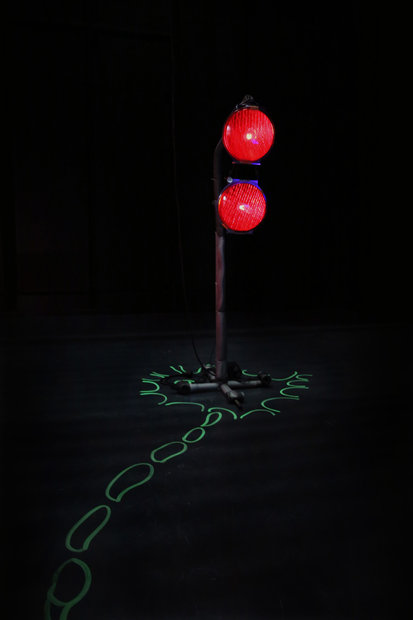
Severin (© Mathias Lempart)

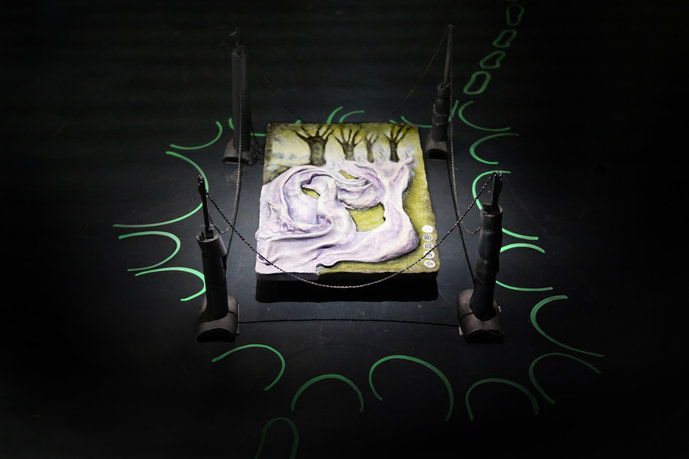
Xavier (© Mathias Lempart)

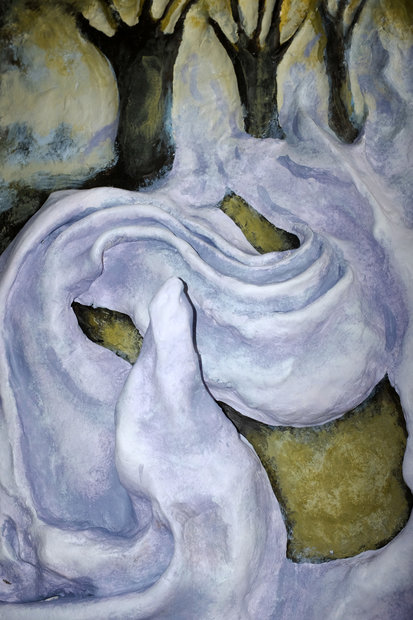
Xavier (Detail) (© Mathias Lempart)

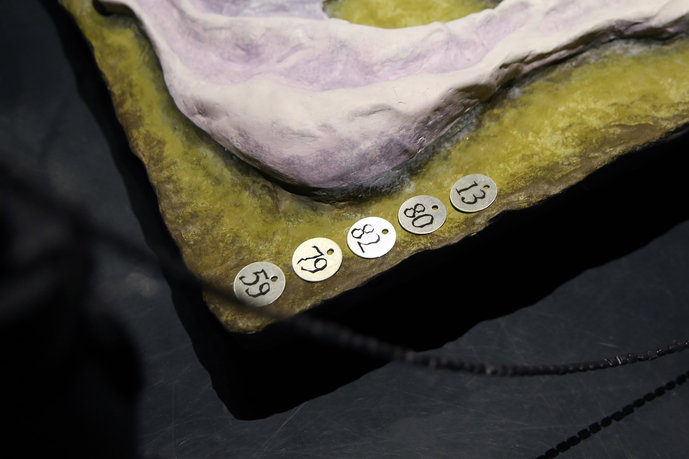
Xavier (Detail) (© Mathias Lempart)

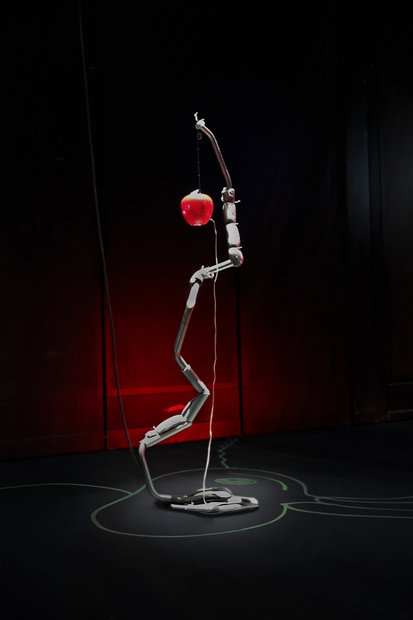
Michelle (© Mathias Lempart)

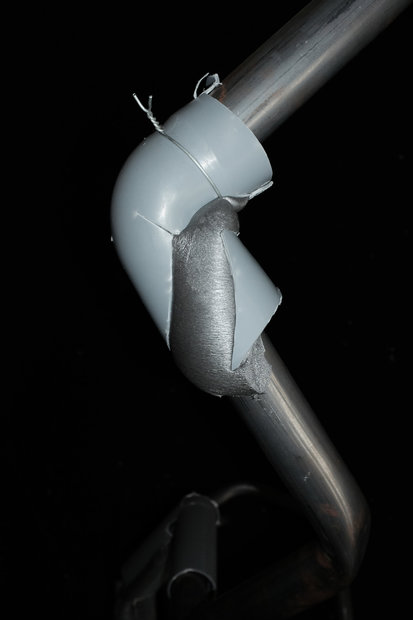
Michelle (Detail) (© Mathias Lempart)


Sören (© Mathias Lempart)

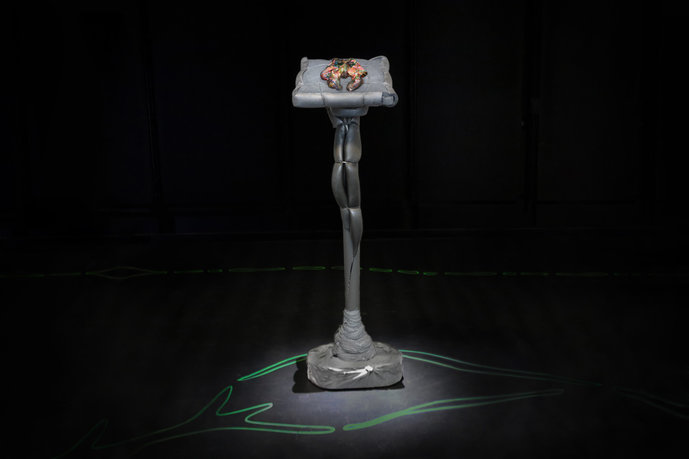
Diane (© Mathias Lempart)

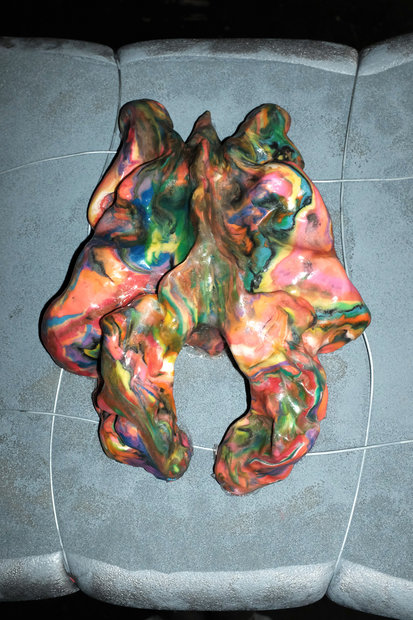
Diane (Detail) (© Mathias Lempart)

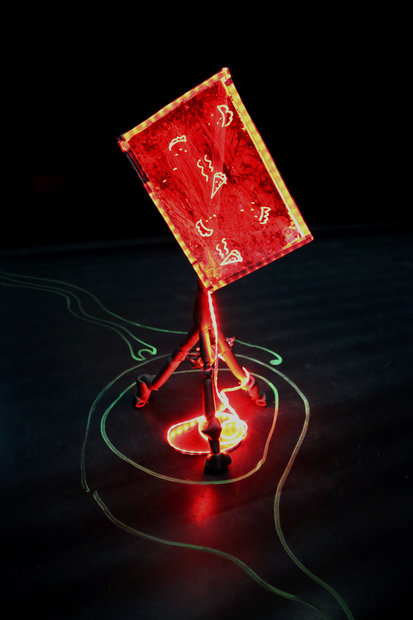
Paula (© Mathias Lempart)
Können wir menschliche Gefühle darstellen? Wie können wir sie kommunizieren und letztendlich in ein visuelles Erlebnis verwandeln? In Bezug auf die Darstellung und Weitergabe subjektiver Wahrnehmung stoßen populäre Konzepte einer scheinbar objektiven Gestaltungspraxis schnell an ihre Grenzen. Das immense Interesse an dem Thema und der Wunsch, die Grenzen der vorherrschenden Repräsentationsnormen zu überwinden, erinnert an den aktuellen Hype für immersive Produktion, bei der durch physisches und psychisches Eintauchen eine unmittelbare Erfahrung geschaffen wird. Am Beispiel der Migräne testet Michael Lempart, wie man Schmerzen sichtbar machen kann. Die Ergebnisse seiner Arbeit wurden in einer Ausstellung gezeigt, die den letzten Schritt eines über ein Jahr dauernden, umfassenden Forschungs- und Produktionsprozesses darstellte. Die Ergebnisse aus seiner Forschung und den Expeditionen rund um die Archive und Museumsausstellungen der Welcome Collection in London (UK), des Teylers Museum in Haarlem (NL) und des Museum of Jurassic Technology in Los Angeles (USA) fließen geschickt in seine Arbeit ein. Die daraus resultierenden „Gebäude“ können als Zeichen oder seltsame anthropomorphe Strukturen gelesen werden, die mithilfe von Audio- und Videoaufnahmen animiert wurden. Im Falle des animierten Körpers „Severin“ wird der Betrachter sogar dazu aufgefordert, die schallempfindliche rote Ampel zu aktivieren, so dass viele Betrachter klatschend oder gar schreiend vor der Arbeit zu sehen waren. Die animierten Körper basieren auf realen Berichten von fünf Patienten, die an schwerer Migräne leiden. Ausstellungsdesign, Museumscodes und Symbolen werden offensichtlich unterminiert. Während Lempart die provisorische oder naive Form zu zelebrieren scheint, macht er besonders geschickt die komplexen Daten aus den Befragungen und seinen eigenen Erfahrungen erlebbar.
(Text von Anna Schanowski)
During my early twenties I was afflicted with migraine attacks. It felt like a nightmare that would numb my senses for days and aggressively disrupt my university routines. After six years, thanks to a minor yet constant dose of beta-blockers, the spook was finally over.
According to the German Society for Neurology, one person out of ten suffers from migraine. Applied to the current world population, this amounts to 758 million individuals—twice the population of the United States. Despite the high number of victims, it seems there are hardly any visualizations that deal with the complexity of this illness. Typically discarded as the “little aches and pains of women,” representations of migraine in our society are limited to stock photos of middle-aged women holding their head and grimacing painfully in front of a bolt of lightning.
Rather than highlighting the limitations of medical imagery in the tradition of critical design, this project seeks to communicate alternative visualizations of migraine. From the beginning, I was interested in revealing a process that allows me to experiment with a range of unfamiliar materials. I worked closely with medical students from the Technical University of Dresden, who provided me with analytical material on the subject and introduced me to the special terminologies within the latest neurological research. Expressions like “the architecture of the brain,” “circuits,” and “wiring” inspired me to start “Proto Migraine Buildings” with a research into building materials.
The idea to translate medical content into a spatial setting also originated from the common use of analogies within the field of neurology, linking human anatomy and architecture. From this first phase of my research, I then developed a set of prototypes and experimental constructions, whose process-based characters mirrored the manual aspects of building and construction.
I conducted interviews with five migraine patients, all varying in age and sex, who introduced me to their own idiosyncratic imagery e.g. “pulsating cherries,” “mouldy nut,” “red”—I am curious about the figurative associations with which the symptoms of this specific illness are visualized. Surprisingly, the visual worlds described by my five interview partners do not compete with each other. In fact, they are so similar, that they even complement each other and in my mind collapse into one shared image.
I took this as a starting point, translating the described images of migraine into material form with a particular emphasis on the literal accuracy of the analogies. I deliberately decided against typically modernist principles, like an aspiration for objectivity and a cool, rational aesthetic. Instead, I decided to include the polyphony of my interview material and immediate emotional reactions into the design process, in order to more directly communicate the patients’ feelings of fragility and vulnerability. Translating the interviewees‘ visual worlds was an inherently playful and intuitive process—a subjective approach that hones the almost impossible task of translating feelings into language.
“Proto Migraine Buildings” proposes an alternative vocabulary around migraine in the form of humorous visualizations of pain-induced imagery. In the allusions to art historical images used by my interview partners — for instance “The Scream” by Edvard Munch — I saw an opportunity to dissolve the common and frequently static stock images of medical discourse and replace them with spatial representations in an exhibition context that approach the topic from an archival or art historical perspective. Furthermore, tropes from animated films such as the anthropomorphized furniture in Disney’s “Beauty and the Beast” (1991) also served as a major visual influence.
During my research I visited institutions in the Netherlands, England, and California, to study exhibition strategies for visualizing scientific phenomena and artifacts. My interest is in the fictionalization (through display design) of seemingly objective and scientific phenomena. For example, the Teylers Museum in Haarlem displays the peak of the Mont Blanc in a glass cabinet from 1802 next to a mammoth skull, which is held together by a set of bulky rods. “Proto Migraine Buildings” stages a similar eclectic collection of curious objects on oversized display-constructs. The displays emphasize the individual objects I crafted after the interviews, infusing these colonial display tropes with absurdity through an exaggerated and inflated self-importance.
Mirroring the human nervous system, the exhibition “Proto Migraine Buildings” is a multi-unit network consisting of materialized worlds of pain and humanized display-constructions. The line between artifact and display is completely blurred through the incorporation of motion- and sound sensitive installation mechanisms. The distinction between exhibition and audience is also called into question.
Kontakt:
www.mathiaslempart.com
moc.liamg(ta)trapmelsaihtam
Die Ausstellung war vom 23.–31. Oktober 2018 im Großen Studio der HfG Karlsruhe zu sehen.
Betreuung: Prof. Rebecca Stephany, Prof. Sereina Rothenberger